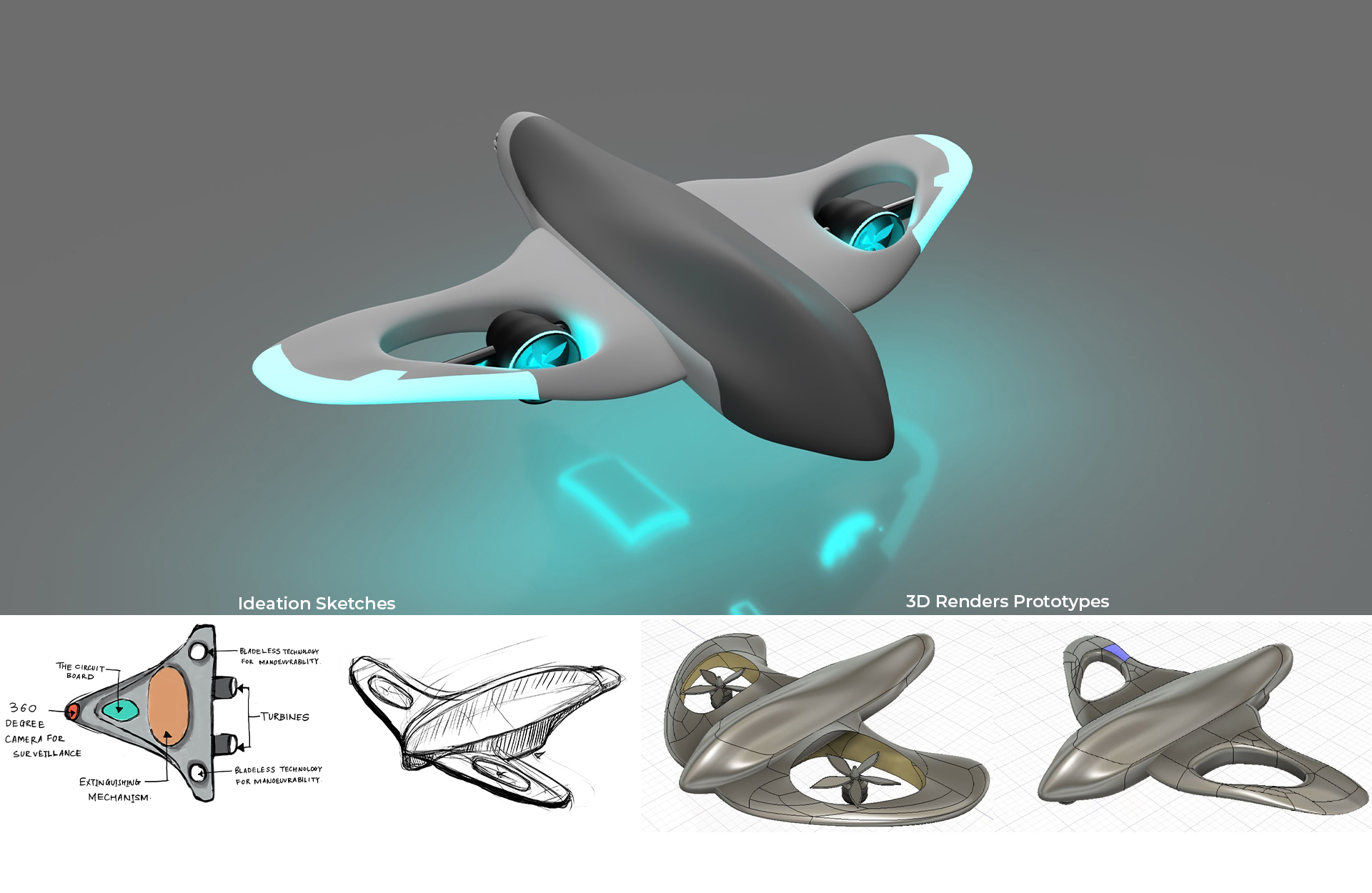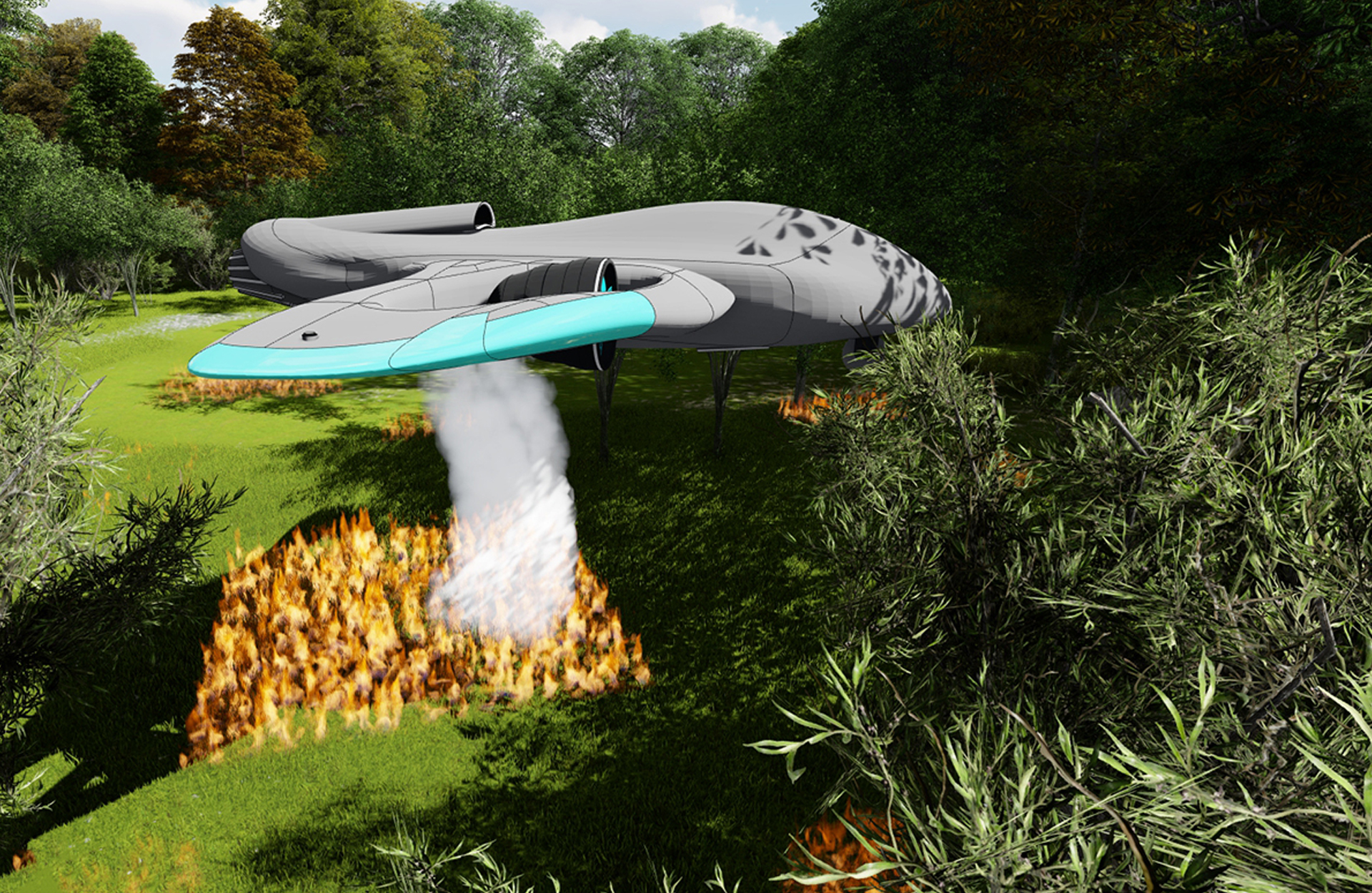Helios
An autonomous response for bushfire prevention.

In this year’s CBI³ program, a team of DFM students tackled the United Nations Sustainable Development Goal 11 (sustainable cities and communities) by addressing regional Victoria’s ability to respond to intense bushfires. Using CERN technology, the team designed an automated, eco-friendly bushfire detection system, Helios, which uses drones to detect and begin extinguishing bushfires in remote areas, and immediately relay bushfire information back to emergency services personnel to ensure quick response times.


THE TEAM



THE CHALLENGE
The CBI³ program is a yearly collaboration between DFM and Switzerland-based science organisation CERN’s Ideasquare lab, along with other partner institutions in the Design Factory Global Network. Students are challenged to use design innovation to develop solutions that connect technology with societal needs. The concepts are framed around a United Nations Sustainable Development Goal (SDG) and utilise the latest technologies developed by CERN.
This year, our team of students explored SDG 11 (sustainable cities and communities) and how it could relate to their local context of Melbourne, Australia. They were tasked with making connections between the SDG and the potential of CERN technology, and to develop a tangible solution with future strategies for long-term implementation throughout 2020, 2025 and 2030.
THE APPROACH
The aspect of sustainable cities and communities that the team explored was disaster risk management. Recently, climate change has resulted in more intense and frequent bushfires and may continue to have a greater impact in the future, affecting the livelihood of Victorians. The current process of bushfire detection and the limited accessibility to rural areas can allow fires to spread wide. The team sought to address this issue, designing a system that can detect bushfires more efficiently, potentially reducing damage to rural communities and the environment.
THE SOLUTION
The team devised the Helios system to address the need for quicker response times for bushfires. The system is designed to be installed on watch towers, which are the current detection infrastructure, and comprises of two elements – the Unmanned Aerial Vehicle, Exodus, and the Human Machine Interface, Codex. Exodus is a drone used to survey remote, dense forest areas and detect bushfire information, which is relayed in real time to Codex, informing emergency services personnel back at the watch tower and thus greatly reducing the detection time. Exodus also has the equipment to reduce and contain any fires it detects, increasing the manageability of the fire once emergency services personnel arrive.
The Helios system is also designed with the environment in mind, as Exodus runs on solar power and uses an eco-friendly inert gas as the extinguishing agent, saving water. These measures work to reduce the CO2 emissions produced by Helios, which in turn aims to lessen the effects of climate change which are causing more intense and frequent bushfires.



